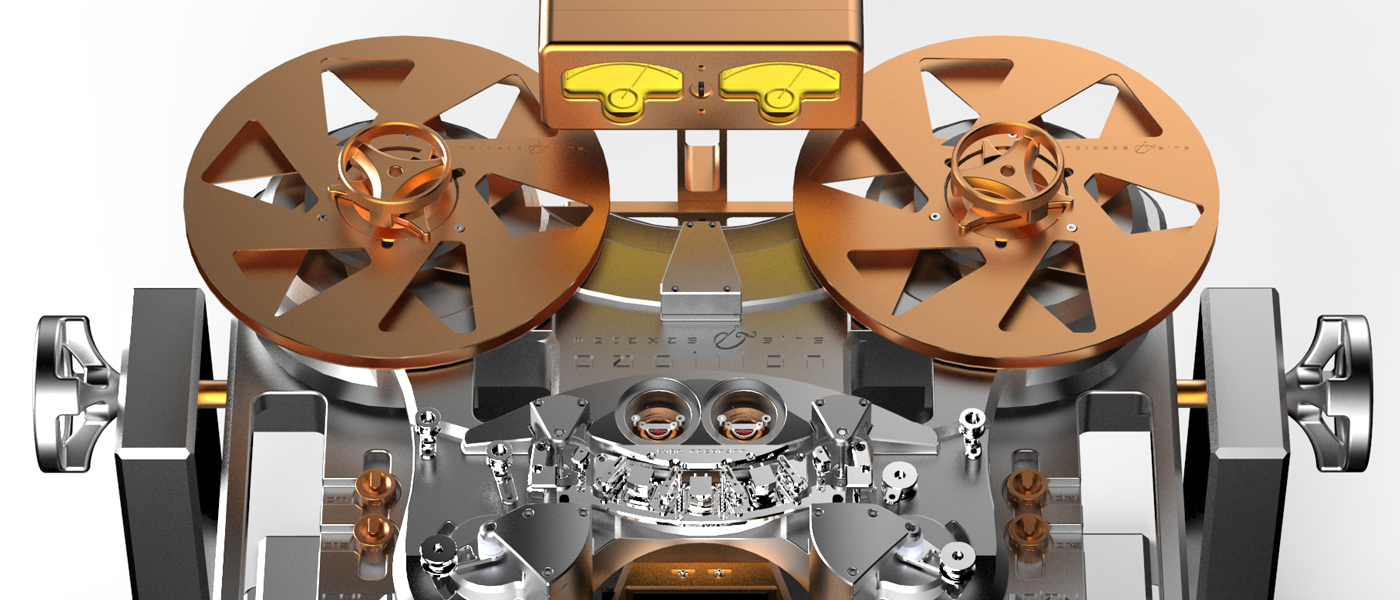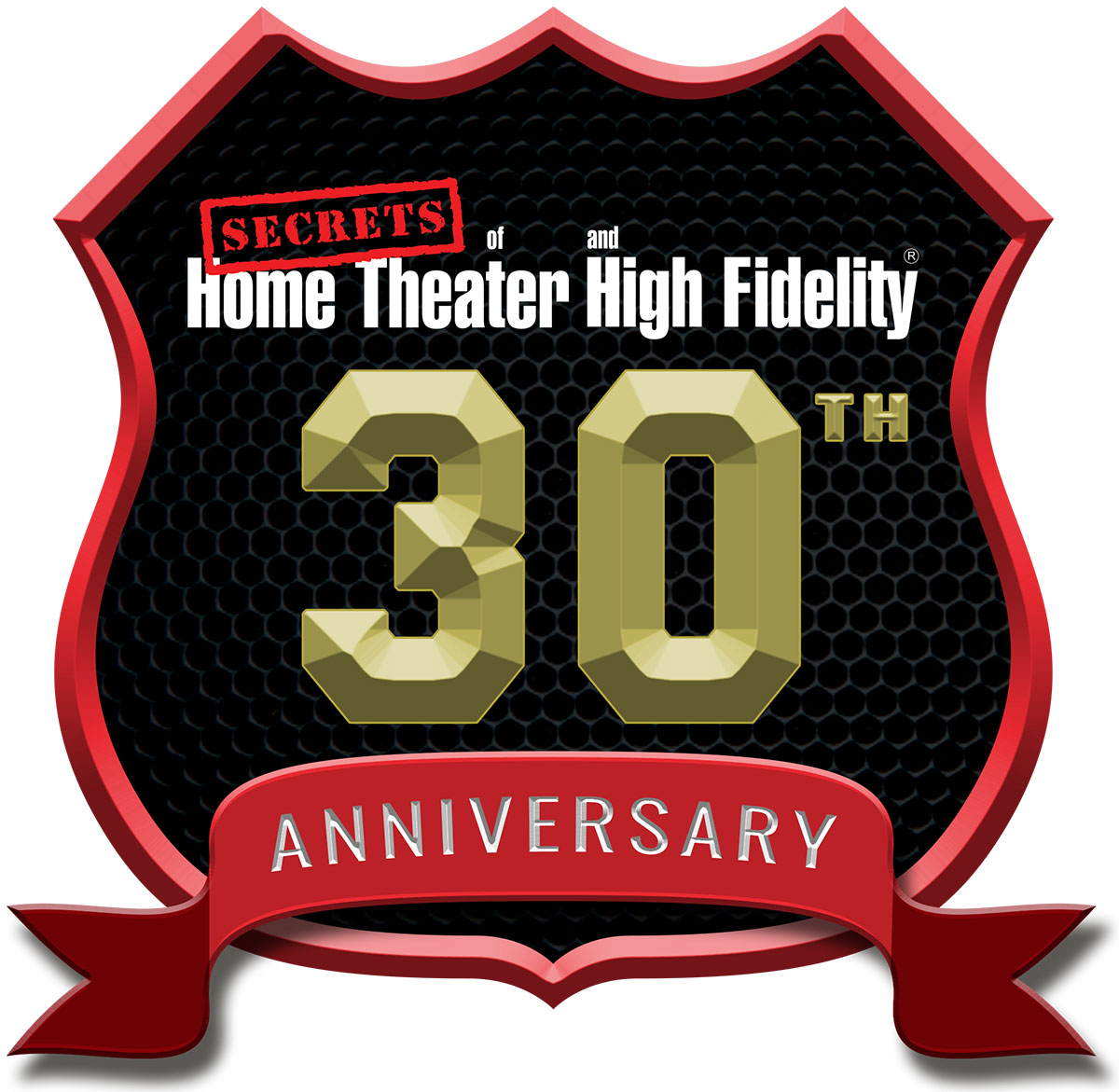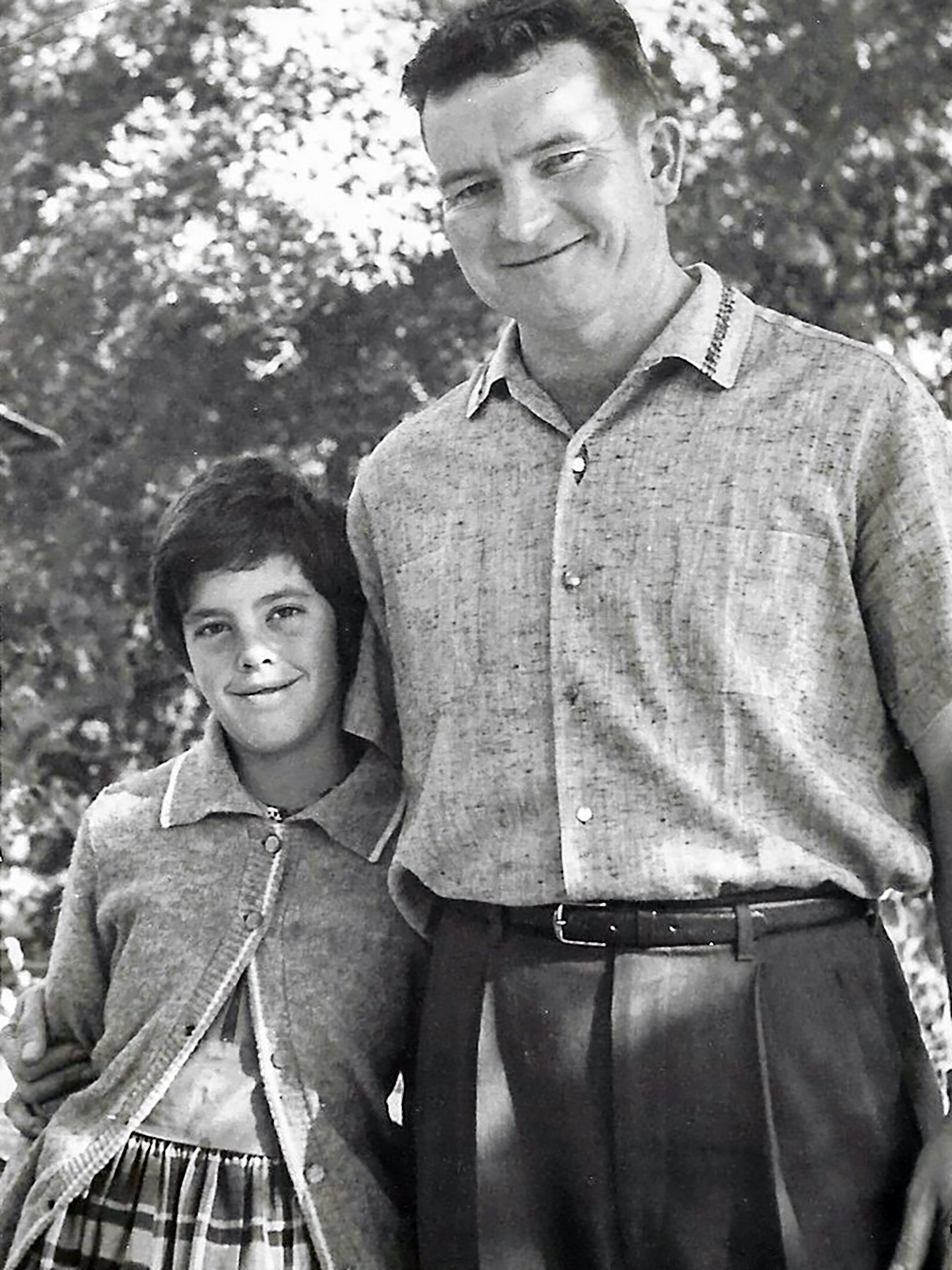First, a little background about my father.
In 1941 he received a degree in electrical engineering from U.C. Berkely and joined the army right after where he served as a Radar Officer in the U.S. Army Signal Corps, from 1942-1946.
 My father, ever the teacher, on the left.
My father, ever the teacher, on the left.
He worked as a radio engineer/DJ for KCRA AM radio in Sacramento, CA. between 1947-1948 and hosted the Lucky Strike Radio Hour. He invented a character named Howard the Duck who had a theme song “I’m Looking over a four-leaf clover”. My dad had come up with the idea of writing a script for the duck with whom he would have conversations during the show. He recorded his voice at one speed and then played it back at another to create a high-pitched duck voice and then would dialog with the pre-recorded Howard (long before the “chipmunks” made the scene).
He returned to U.C. Berkeley in 1948 to get his master’s degree while lecturing there. His master’s thesis was based partly on his research into eliminating background noise on recordings, so audio was always a part of his life. My dad was both a serious professor, but also fancied himself as something of a hipster; he played jazz guitar and always had the coolest Hi-Fi set-ups of any of his friends. Before I was born, my older sister remembers that they had a console 7-inch RCA television when they lived in Berkeley in 1947. They were the first to have television in their apartment building and she remembers people always stopping by to see this amazing appliance. She remembers swanky faculty cocktail parties at their apartment where listening to comedy albums was the high point of the evening.
 RCA 7-inch television like the one my family had.
RCA 7-inch television like the one my family had.
In 1952 he took a position teaching electrical engineering and radar at the Naval Post Graduate School in Monterey, CA. Back then, the only way to watch television was to have a TV antenna on the roof, but there were only two TV stations available in Monterey at the time; one from San Francisco and one from Salinas, and the signals weren’t that strong. We lived in Naval housing called La Mesa Village. Lucky for the residents, my father, ever the engineer/inventor came up with a cable system based on some early development in 1948 in Pennsylvania. He figured out the details and built an antenna system on Jacks Peak, the highest point on the Monterey Peninsula. This is where Heathkit enters the story.
Secrets Sponsor
He had a workshop in La Mesa Village, which housed all the equipment that brought in the signals from the antennas and routed them through the cable system he had built for the homes in the village. At this point, I was part of the family, and from the time I was about 4, my father let me tag along to his workshop, which included riding behind him on his turquoise motor scooter up through the pine forests behind La Mesa Village to the top of Jacks Peak to service the antennas and all the equipment housed there. His workshop was my favorite place to be. It had the classic dusty ozone smell of electrical equipment which I loved. It was filled with humming sounds and was always warm. There were benches filled with mysterious gear, my favorite being the HealthKit oscilloscope he had built along with much of the other gear which included signal testers and a radio that was always playing in the background. That oscilloscope was mesmerizing and became a teaching tool that my father used to explain what he was doing.
In addition to the cable TV workshop, my dad always had the latest Hi-Fi gear, including a reel-to-reel tape deck, which he used to record his jazz guitar performances that he would put on for family and friends, a turntable, amplifiers, speakers, and AM and even early FM radios. Some of this equipment, like the radios, were ordered from Heathkit catalogs, and I remember how I would sit next to him while he read details from the catalogs to me and, ever the professor that he was, explain what he was looking for and why, and would then quiz me to see if I had a basic grasp of what he was ordering. I recall that sometimes he would ask me what I thought he should order, with the understanding that I would “help” him build it.
When boxes were delivered from Heathkit, it was like Christmas. My dad was very methodical and as he would unwrap the various components, he would hand me the parts, telling me what they were, and where to place them on the workbench. There was always a checklist to be checked off as I would arrange the parts for him. He had a solder gun, and I remember the smell of hot solder and the puffs of smoke as he bent over his workbench. I had a high stool that was my perch for being able to see what he was doing. There were three things I remember about his projects: the first was the quiet companionship of being his little buddy who went with him on his journeys to check on the antennas. Next was keeping him company in his workshop, where I would receive lessons on electrical components while he built his gear, and the third thing was the Zolitone spatter paint he painted every cabinet or paintable surface with. He was crazy for this stuff. It was grey with multi-colored specks and had a rough texture that I loved to run my hand over.
Secrets Sponsor
When my folks divorced when I was 9, I was broken-hearted to leave my dad. However, my education in his world of electronics and audio would continue when I would visit him. He had to teach during the day, so, not knowing what to do with me, he would set up his Hi-Fi gear for me and teach me how to record on his reel-to-reel tape deck. He especially wanted me to record myself playing the ukelele he had given me and wanted me to master (with the misguided notion that learning the ukelele would make me a popular girl). I didn’t master the ukelele, but I did become very comfortable with running audio gear and spending the day playing his various jazz and Broadway musical albums, especially his comedy albums.
My dad, ever the teacher, gave me not only the confidence and curiosity to learn about his world of electrical engineering and endless Heathkit projects, but also the permission to be curious and nerdy, and I credit him with my love of audio. He is no longer alive, but I know he would be pleased to know that his teachings still live on in me to this day.






